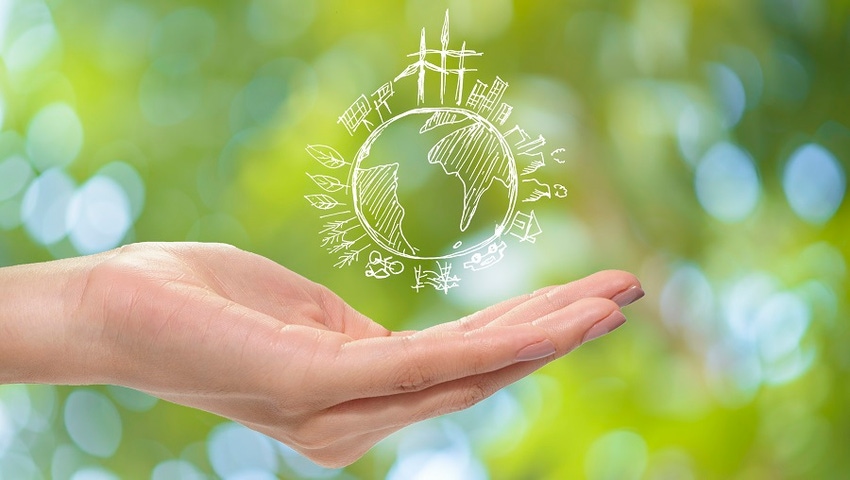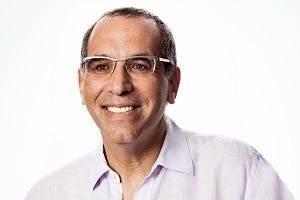Joe Minski, CEO of Wellnext, discussed why Wellnext got involved with Rainbow Light, as well as the process that lead to the launch of EcoGuard packaging. He also gives advice on how other companies can get involved with sustainability efforts, and how to raise customer awareness about sustainability.

Rainbow Light launched Path to EcoGuard, a global environmental wellness campaign, to help create solutions for the consumer packaging crisis. This campaign began 25 years ago when Rainbow Light commissioned its first environmental impact study. The company found that single-use plastic had the most negative impact on the ocean, which lead to the creation of Ecoguard packaging–an FDA-approved, food-grade, BPA-free recyclable plastic—that helps reduce plastic bottles from polluting waterways and natural habitats.
 Joe Minski, CEO of Wellnext, discussed why Wellnext got involved with Rainbow Light, as well as the process that lead to the launch of EcoGuard packaging. He also gives advice on how other companies can get involved with sustainability efforts, and how to raise customer awareness about sustainability.
Joe Minski, CEO of Wellnext, discussed why Wellnext got involved with Rainbow Light, as well as the process that lead to the launch of EcoGuard packaging. He also gives advice on how other companies can get involved with sustainability efforts, and how to raise customer awareness about sustainability.
Q&A with Jose Minski, CEO of Wellnext
Q: Rainbow Light commissioned its first environmental impact study 25 years ago to establish best practices for reducing its packaging footprint; how important is research to sustainability initiatives?
A: When Nature’s Products, now Wellnext, was first introduced to Rainbow Light in 2002, we were impressed that the search for sustainability in packaging had already been underway for more than 10 years. The commitment that the company leaders demonstrated in commissioning an impact study as early as 1990, when environmental researchers were hard to find, was another important proof point for us that Rainbow Light was a brand we wanted to invest in. It took an additional eight years to get to the launch of Rainbow Light’s 100 percent recycled, 100 percent recyclable EcoGuard packaging—the first of its kind to be FDA-approved for dietary supplements in this country. The time spent in development and stability testing with the plastics manufacturers was well worth the effort.
We have long been committed to sustainability in manufacturing under Nature’s Products and our other companies dating back three generations, but the research around consumer packaged goods clearly demonstrates how many of our precious natural resources are being depleted, and wasted by thoughtless business decisions. As business leaders, the choices we make today will have profound implications for the health of consumers and the health of our planet for generations to come. It takes discipline and commitment in an era of quarterly profit reporting to think in terms of 1,000-year consequences, as is the case with plastics. While discipline and commitment are critical, the research proves the point without any room for doubt, at any stakeholder level.
Q: What should companies consider when conducting research for a sustainability program?
A: Third-party credibility is certainly important, and there are many invaluable resources today. At the time, Susan Collins, executive director of the Container Recycling Institute, was instrumental in helping us determine best practices. Now, we have a dedicated director of packaging who is charged with researching and sourcing the most sustainable packaging choices available. Within our commercial team, we see packaging research across all of our brands as an important, ongoing focus, since the landscape is always changing. For instance, we’re currently investigating tree-free labels.
In addition to packaging choices that the consumer sees, we also look to the materials and business practices used in our plants—from the cardboard in our cartons to cleaning materials we use in our facilities. Attaining organic certification was an important step in the process.
Q: How should companies allocate resources to manage and grow sustainability initiatives?
A: It is best if sustainability can be instilled as a core company value and included in topics in ongoing employee education. That way it becomes everyone’s shared job to help preserve and protect our resources, and seek out ways to keep doing better. One milestone was establishing the Rainbow Light corporate headquarters as the anchor building in the Delaware Addition, a LEED (leadership in energy and environmental design) neighborhood pilot project certified by the United States Green Building Council. The Santa Cruz Delaware Addition has helped set the new international standard for sustainable communities.
Q: What are the top considerations when setting goals for a sustainability program?
It’s good that this is an area that can be easily measured, so goal-setting can be both aggressive and definitive. Within our Rainbow Light brand, we can easily see the impact from the EcoGuard packaging grow with year-over-year sales growth, saving more than 10 million plastic bottles from the waste stream, while continuing to support a 92 percent reduction in our carbon footprint from packaging. We also work to set up systems where the default is automatically the best practice.
Q: How should companies raise customer awareness on sustainability initiatives? What are the best methods?
A: We believe that all changes start at home, and we start with our employee stakeholders, as we continue to grow from there. Taking that awareness to our customers and consumers, as it is an important part of what we stand for, is very much in line with the work that the natural products industry has been built upon. In an age of social media, it’s easier than ever to engage the consumer directly. After only a few weeks, our Path to EcoGuard video has already been shared by thousands and viewed by almost a half-million consumers.
Q: After Rainbow Light completed its research, what were the next steps in implementing the “Path to EcoGuard" campaign?
A: Once the early research showed the clear environmental advantage of recycled and recyclable plastic over any available packaging alternative, the real development began. Rainbow Light research included tracking progress worldwide, pointing to the scientists in Europe who were leading the charge. Development, safety and stability testing, research and development of compatible packaging, and implementation and project management, all went hand-in-hand. Once the launch was in sight, with technology brought over from Germany, the communications campaign began including trade events and consumer campaigns, which continue to this day. The Path to EcoGuard campaign follows a 2015 partnership with the research organization, 5 Gyres Institute, Whole Foods Markets and other sustainable brands in a “Ban the Bead" campaign that helped raise consumer awareness around plastic microbeads present in many conventional toothpastes and exfoliating products. On Dec. 28, 2015, President Obama signed the Microbead Free Waters Act of 2015, banning the sale of microbeads in the United States. This is a testament to the immense power of an educated consumer.
Rainbow Light is based in the seaside community of Santa Cruz, where the ocean is a constant presence. The coastal waters of Santa Cruz are at the heart of one of the most pristine marine sanctuaries; however, researchers say if the current rate of ocean pollution continues, in less than nine years there will be one ton of plastic for every three tons of ocean fish. By providing ready access to our container suppliers we hope to speed positive change and create a forum for transparent exploration around real solutions to protect the precious health of our oceans—and consequently—the health of us all.
About the Author(s)
You May Also Like




.png?width=800&auto=webp&quality=80&disable=upscale)